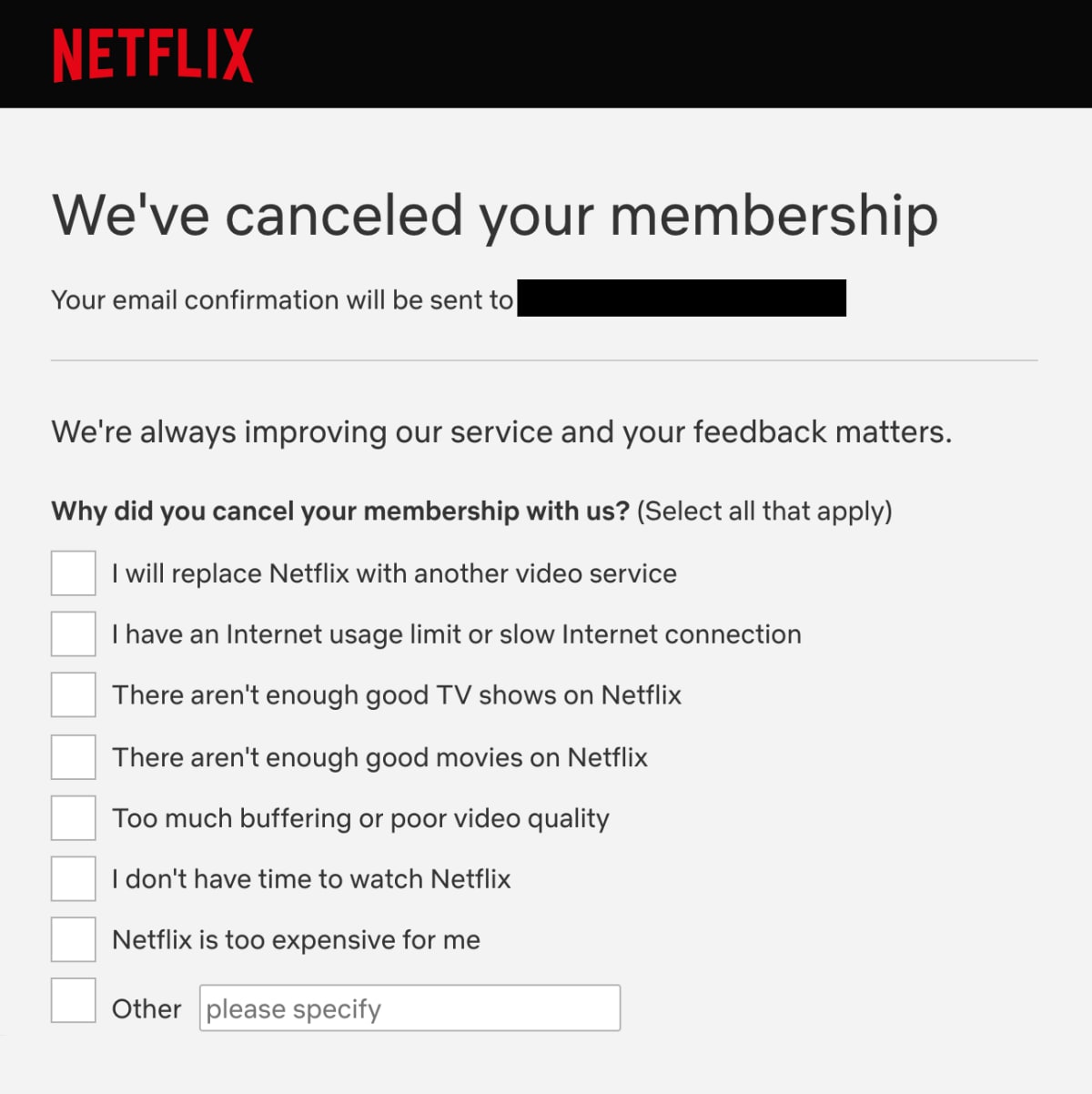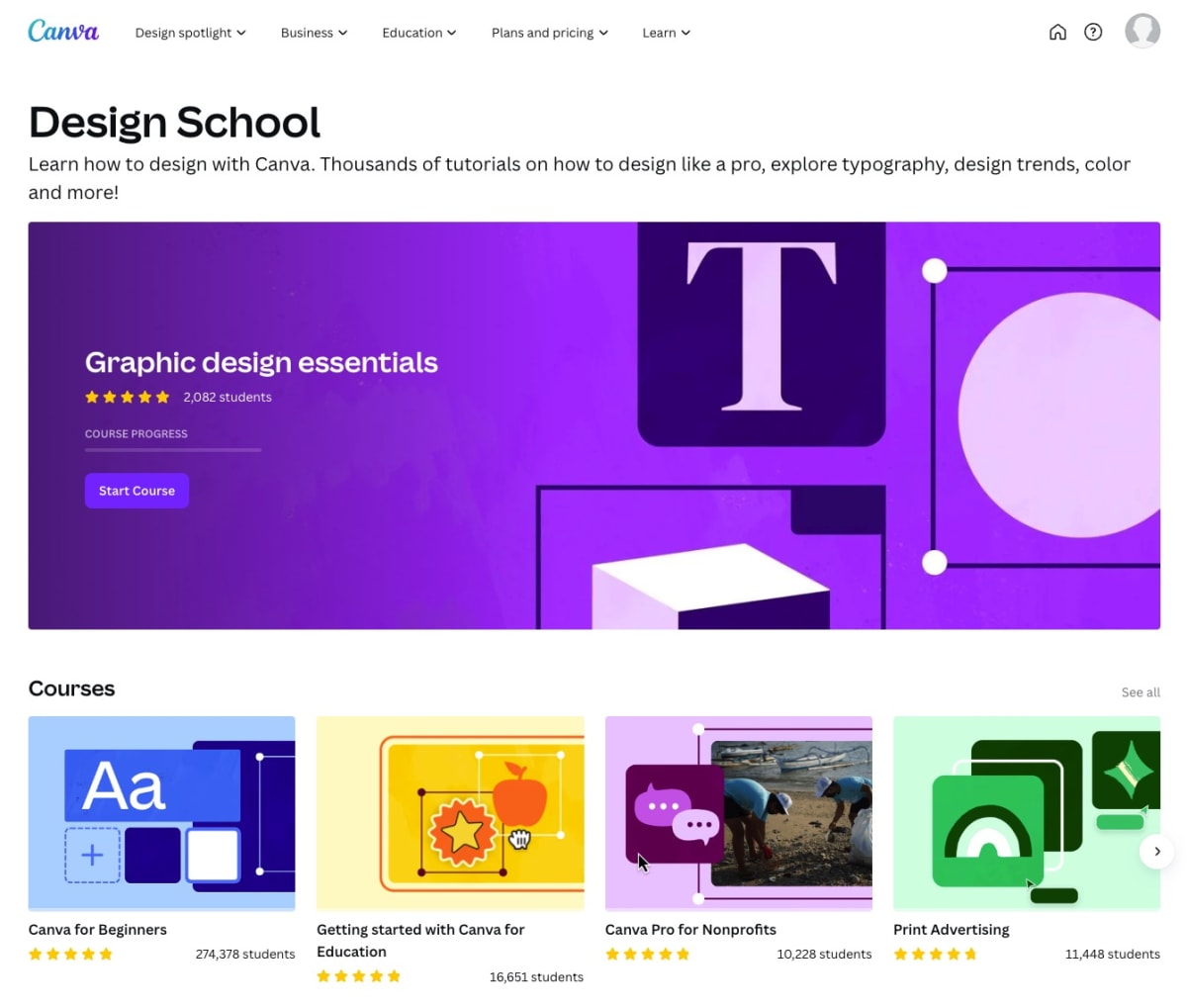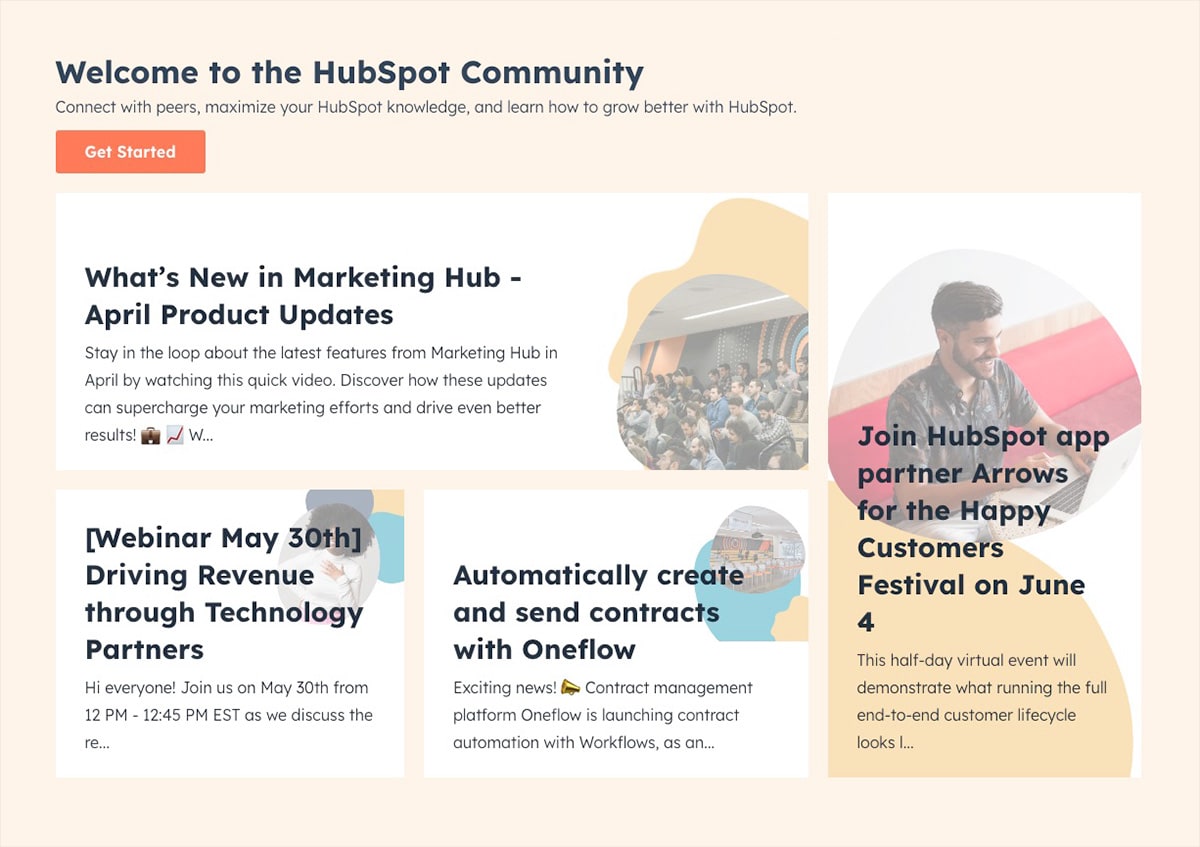Fighting subscription churn: Thirty-two tactics to increase your retention and get back to growth
The following article is from our in-house playbook, which contains techniques and strategies we often use to grow our clients’ businesses—in many cases, with increases of over 50%, 100%, or more.

Churn
The percentage of customers who discontinue using a company’s products or services over a specific time period (usually a month or year).
If too many subscribers leave, the engine stutters. Past a certain point, growth stalls entirely.
Some churn is inevitable in any business, but trying to outrun a high churn rate is a great way to decimate your profits, exhaust your team, and lose your best people.
Two traits of low-churn businesses
In our experience, the most successful subscription businesses:
- Obsess about building the best possible products and services.
- Listen to their customers, actively seeking engagement and feedback.
Obvious? Of course. And yet, it’s easy to lose sight of these fundamentals amid the talk of churn rates, strategies, and tactics. What’s less obvious is just how much easier these two things make everything else. Happy and loyal users don’t leave. Subscribers who feel listened to are far likelier to raise their issues before they become… issues.
Numbers don’t churn. People do. Before we can fix the numbers, we need to understand the people.
Research: Understanding your customers
Every subscriber matters, but to reduce churn effectively, we want to frame our thinking around a pivotal question:
Why do our most profitable customers typically churn?
With this question in mind, we can examine churn from three perspectives: who, when, and why?
Who is churning?
This is usually the easiest question to answer because we’ll have the list of lapsed subscribers. Beyond that, the goal is to identify groups or patterns hiding in the data. For example, are our churners disproportionately clumped around specific:
- Subscription plans?
- Industries?
- Geographic locations?
- Use cases?
Any patterns we locate will help us target more detailed research.
When are they churning?
Similarly, are groups of users canceling their subscriptions at specific stages:
- After their first month?
- At certain times of the year?
- At subscription-related milestones? (e.g., six months in.)
- After they’ve achieved (or failed to achieve) a specific goal.
As with the “who” question, the “when” question helps zero in on the most important issue of all…
Why are they churning?
To understand the “why?” we need to ask our customers. To do that, we recommend two specific techniques.
1. Exit interviews
The gold standard for understanding churn is talking to customers who have left.
By doing so, we can discover the background, the reasons, and the moments of truth that led to their leaving. Was the service too expensive? Have they found an easier alternative? Did they feel like they were paying for features they didn’t need? What could we have done to retain them?
Exit interviews allow us to ask detailed follow-up questions but tend to require a lot of time and resources.
2. Cancellation surveys
A cancellation survey is a feedback form presented during or after the cancellation process. They allow us to capture higher-volume (but lower-fidelity) data on the reasons for cancellation. Don’t presume to know the reasons—use open-text fields so you aren’t introducing any bias into the responses.

Other research targets
Depending on your particular business—and the insights uncovered by the three questions—it can also be useful to:
- Map the entire customer journey with analytics to highlight areas where customers struggle, stall, and churn.
- Interview your superusers to understand what they love about the service (and feed it back to marketing or the customer success team).
- Identify the metrics that correlate with high retention and put tracking in place. (Later, you can ruthlessly test ways to increase these metrics.)
- Use Price Optimization Analysis to find the most profitable mix of subscription plans and pricing for any given service.
As you compile your research, you’ll likely identify numerous issues and opportunities. Prioritize them by impact and use the tactics below to address them systematically.
Thirty-two tactics to reduce churn
Some tactics may not be relevant for you, but one idea can often make a meaningful difference. Choose the most relevant tactic for your biggest issue and get started:
Relentlessly reduce the time it takes users to get value from your service. This can involve streamlining your onboarding process or simplifying the initial experience of the product. Stripe offers “low-code” solutions alongside its complex APIs. TypeForm offers templates that subscribers can use immediately. (The sooner a customer can realize a benefit that outweighs the subscription cost, the better.)
Don’t stop with the initial experience. Help users wring the maximum value from their ongoing investment with relevant, timely content that deepens their engagement. Canva’s Design School includes tutorials and live learning sessions, with dedicated courses for beginners, teachers, and non-profits.

Use the data you’ve collected to identify “at-risk” accounts and act proactively to reengage with them. For example, if churning customers typically stop logging in four weeks before they cancel, set an alert to reach out personally after three weeks.
Send trigger-based emails that reflect a subscriber’s use of the product rather than their length of tenure. Slow starters need to feel supported, and power users need to feel challenged (and recognized). Behavior-based emails reduce the chance that either will quit.
Likewise, segment your users based on their behavior, demographics, or subscription type. Each group may have different needs and risk factors. Implement the best tactics to engage and retain each segment, starting with the highest-value customers. Adobe’s Creative Cloud offers different combinations of apps for specific types of creatives and competitive pricing based on location.
Reposition your product or service so it’s compared to higher-value alternatives. We did this with the fintech company GoHenry, positioning them against financial education tools rather than other bank accounts.
Widen access to customer support. This might mean increasing the hours covered or adding new support channels. Remember, feedback is a gift! Great companies capture (and act on) negative feedback. They want to hear it.
You’d be surprised how often our user tests reveal technical issues and frustrations with online services. Fix any technical issues (obviously), and consider implementing the features that users request. (Reward customers who give you actionable feedback with perks, mentions, or even discounts. Incentivize behavior that you want to encourage.)
Tell users when you add features that address their needs, requests, or frustrations. (It’s all extra value for the money they pay.) This is what Netflix is doing when it emails you about a new show it thinks you will enjoy.
Celebrate your most active users, amplifying their success within your audience. Kit’s Creator Stories is a great example of this.

Carry out Price Optimization Analysis to find the sweet spot between subscription price and length of subscription, thus maximizing lifetime customer value.
Tease future value with a public roadmap of upcoming features, especially if it contains features customers have asked for. (The world-class copywriter Gary Bencivenga offered a 12-month no-risk guarantee on his copywriting course. But once you bought it, the welcome letter said, “I’m currently working on something absolutely amazing called ‘Da Bomb,’ which I’ll send to you once it’s ready.” Anyone who returned the course would miss out on “Da Bomb.”)
Gamify the learning or milestone progression. For example, we enjoy how Kaggle gamifies the growth of data scientists, and Duolingo’s use of leaderboards.
Consider how you might deepen the customization and personalization of your product or service. The more personal and relevant a service becomes, the more value it delivers, and the harder it is to cancel. For some services, value accrues automatically. The more content you add to your Notion wiki, the stickier the service becomes.
Monetize your product or service with alternative revenue streams. Fortnite is free, but as any parent can testify, you can still spend plenty on V-Bucks and battle passes that keep you invested in the platform.
Introduce loyalty programs that reward subscribers for the length of their tenure, feedback that you can use, or for referring new customers. Miro uses many of the techniques in this list, including an affiliate program.
Bundle other services that will enhance your value and make the subscription harder to cancel. For example, many cellphone providers include Netflix with their phone plans. Amazon Prime is a delivery service that bundles video, music, games, and digital books.
If price is a common reason for cancellation, test a new, lower-tier plan that provides only the most essential features at a lower cost.
If your core users are churning because they want more, consider creating premium tiers that deliver more features, access, or status. Salesforce’s per-user pricing ranges from $25 to $500 a month, allowing it to capture and retain more of the market.
If your users struggle to reach their goals, build a community that connects them to those who have. Hubspot makes great use of this technique, giving users a place to engage and support each other.

Incentivize early renewal with exclusive content, additional features, or extra discounts.
Test pricing plans that gradually raise your average customer lifetime value. For example, if the average customer subscribes for seven months at $10.99/month ($76.93 total), test a discount that offers twelve months for $99. (Many companies, including Zendesk, offer this kind of incentive.)
Increase the price of your monthly plan to make your annual plan more attractive. We’ve done this repeatedly with one of our clients to great effect. Testing these types of changes is critical (of course). If your conversion rate drops, you’ll want to assess its impact against long-term revenue growth.
Keep your sales and marketing focused on the correct audience. Companies that widen their marketing net in search of sales often pay the price in higher churn rates when “edge” customers become disenchanted. If marginal users represent an opportunity, consider making something specifically for them (as in point 25).
If specific needs or frustrations account for a sizeable churn, consider building new products or services to target these users. Again, customer interviews can be incredibly helpful if you want to understand the needs of a specific audience. Figma, the online design collaboration tool, developed a low-cost whiteboard application, FigJam, to welcome non-designers into the company’s ecosystem.
Identify the point at which most users churn and test a repackaged one-time product that fits that timeline. For example, if you are an EdTech that offers a $9.99 subscription with an average churn of six months, consider creating a one-time-fee ($99) version that will give the users “everything they need to pass the exam” without the subscription. Obviously, this tactic will not reduce churn, but it will raise the lifetime value of each customer.
Challenge or change your payment provider. Ensure that your payment processor isn’t adding unnecessary friction or blocking payments from important markets. Fraud protection is important, but it can sometimes penalize genuine customers. Talk to your suppliers to find the best balance, and use low-friction payment processes like Apple Pay or Google Pay.
Add or improve your dunning processes—the sequence of emails or messages you use to inform users of upcoming charges or payment status. Many subscribers are lost because a “stored” credit card has expired.
Parting may be a sweet sorrow, but…
If your users decide to cancel, there’s nothing to stop us from offering a respectful solution during the process. These could include:
Dedicated time with a product manager or technical support genius. Online calls allow the customer to be heard and give you the benefit of detailed feedback. Sometimes, they can even remove a roadblock and make the subscription viable again.
A temporary discount until you have added a specific feature or resolved their issue.
A pause on their subscription for the same reason.
A discount code for a future return if and when the customer is ready.
Conclusion: Test your interventions
If users want to leave, we must make it as easy as possible for them to do so. (See the fantastic Spyfu example we mentioned in this article.) Making cancellation easy is more than common courtesy; it’s good business. Treating customers well increases the chances that they’ll be back, that they’ll recommend us… and that they’ll agree to an exit interview.
(Did we mention how valuable those are?)
As we said at the start of this article, a well-run subscription business is a beautiful thing. The best way to create and maintain one is to constantly improve your product, obsessively engage with your users, and learn everything you can about why they cancel.
Once you have the “why,” you can choose the highest impact tactics, test their effect, and relentlessly drive down churn.
How much did you like this article?
What’s your goal today?
1. Hire us to grow your company
We’ve generated hundreds of millions for our clients, using our unique CRE Methodology™. To discover how we can help grow your business:
- Read our case studies, client success stories, and video testimonials.
- Learn about us, and our unique values, beliefs and quirks.
- Visit our “Services” page to see the process by which we assess whether we’re a good fit for each other.
- Schedule your FREE website strategy session with one of our renowned experts.
Schedule your FREE strategy session
2. Learn how to do conversion
Download a free copy of our Amazon #1 best-selling book, Making Websites Win, recommended by Google, Facebook, Microsoft, Moz, Econsultancy, and many more industry leaders. You’ll also be subscribed to our email newsletter and notified whenever we publish new articles or have something interesting to share.
Browse hundreds of articles, containing an amazing number of useful tools and techniques. Many readers tell us they have doubled their sales by following the advice in these articles.
Download a free copy of our best-selling book
3. Join our team
If you want to join our team—or discover why our team members love working with us—then see our “Careers” page.
4. Contact us
We help businesses worldwide, so get in touch!
© 2025 Conversion Rate Experts Limited. All rights reserved.















